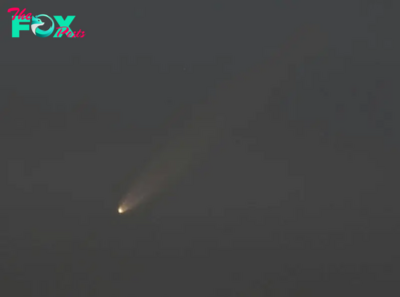Science
Supermassive black hole roars to life before astronomers' eyes in world-1st observations
For the first time ever, astronomers have witnessed the black hole at the center of a galaxy roaring to life in real time — and they're not sure why it happened.
The awakening of the cosmic monster, which is a million times the mass of our sun and located 300 million light-years away inside the galaxy SDSS1335+0728, is unlike anything astronomers have seen before.
Scientists were notified of the transformation when the Zwicky Transient Facility in California recorded a sudden leap in the galaxy's brightness in 2019. Follow-up observations found that the galaxy had become four times brighter in ultraviolet frequencies and was spewing out 10 times more X-rays than before. And it's still growing brighter four years later. The researchers will publish their findings in the journal Astronomy and Astrophysics.
"Imagine you've been observing a distant galaxy for years, and it always seemed calm and inactive," study lead author Paula Sánchez Sáez, an astronomer at the European Southern Observatory in Germany, said in a statement. "Suddenly, its [core] starts showing dramatic changes in brightness, unlike any typical events we've seen before."
Related: 1st detection of 'hiccupping' black hole leads to surprising discovery of 2nd black hole orbiting around it
Supermassive black holes lurk at the centers of most galaxies, including our own. Their immense gravity tethers dust, gas, stars and planets to a loose orbit around them. Light is incapable of escaping the powerful gravitational pull of a black hole, but that doesn't mean it doesn't produce any.
This is because superheated, glowing matter that's been stripped from planets, stars, gas, dust and other black holes can swirl around the entrance to the monster's jaws at close to the speed of light. Once the plasma plunges over the black hole's precipice, or event horizon, it is lost inside forever.
-

 Science11h ago
Science11h agoHere’s What Trump’s Win Means for NASA
-

 Science3d ago
Science3d agoWhy Risky Wildfire Zones Have Been Increasing Around the World
-

 Science3d ago
Science3d agoIt’s Time to Redefine What a Megafire Is in the Climate Change Era
-

 Science4d ago
Science4d ago4 Astronauts Return to Earth After Being Delayed by Boeing’s Capsule Trouble and Hurricane Milton
-

 Science5d ago
Science5d agoThe Elegance and Awkwardness of NASA’s New Moon Suit, Designed by Axiom and Prada
-

 Science1w ago
Science1w agoSpaceX Launches Its Mega Starship Rocket. This Time, Mechanical Arms Catch It at Landing
-

 Science3w ago
Science3w agoYou Won’t Want to Miss October’s Rare Comet Sighting. Here’s How and When You Can See It
-

 Science1m ago
Science1m agoA New Spacecraft Could Help Determine if There’s Life on a Moon of Jupiter



























